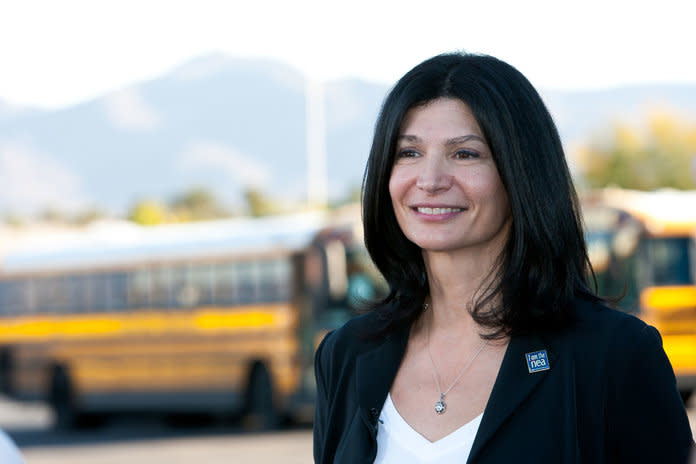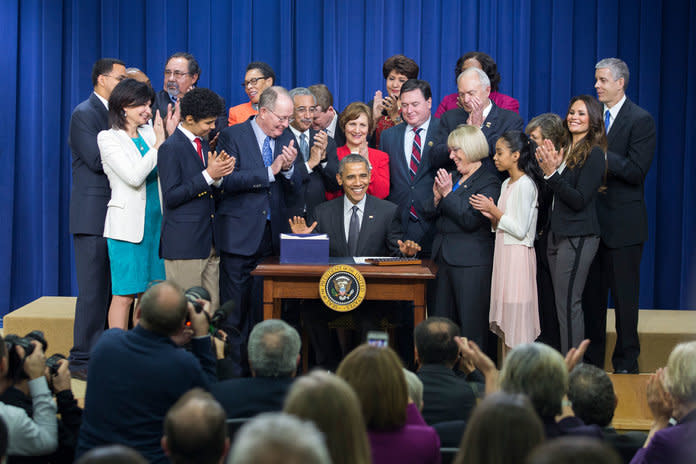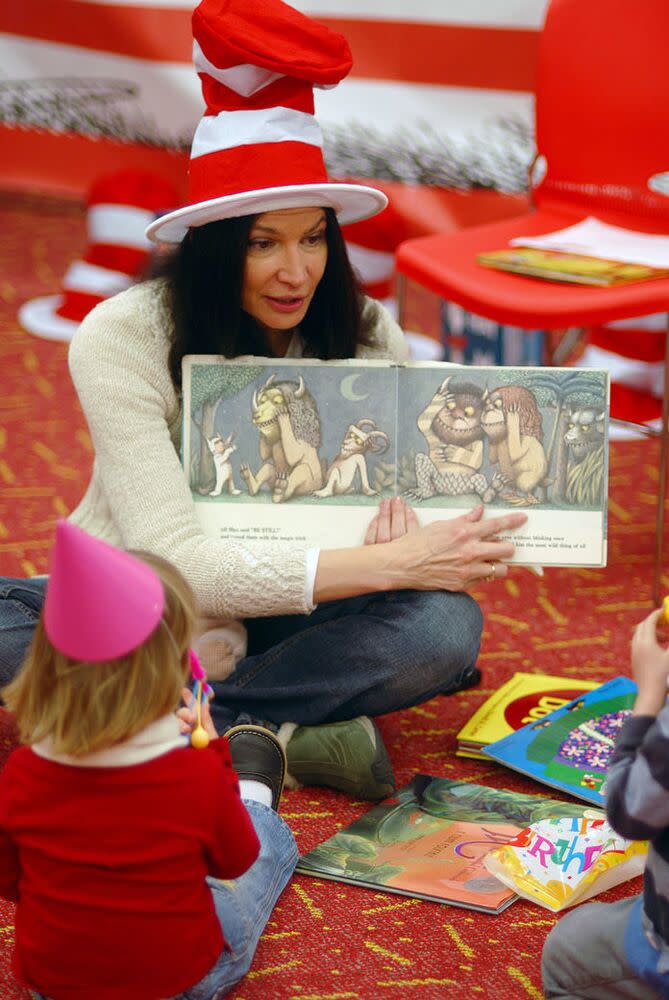Schools May Be Closed, But NEA President Lily Eskelsen García Is Fighting for Every Child's Education
Serving as president of the National Education Association, a labor union with over 3.2 million members, was never “the goal” for Lily Eskelsen García. She isn’t interested in climbing the ranks to only serve as a face of a movement. She’d rather use the title as a tool to help get things done for the children she and other teachers around the country care for.
“It’s not the biggest thing in my life,” she emphasized to InStyle during a recent video call. “It is what I use to do what I think is important.”
García began her career by a series of fortuitous events, and with the help of a few people who believed in her. A former lunch lady, she moved to the classroom when a school’s director thought she might make a good kindergarten teacher’s aide. That teacher suggested she pursue a teaching degree of her own. “No one had ever, ever talked to me about going to college,” she said. “It just wasn’t done.” García excelled, and was dubbed Utah’s Teacher of the Year after nine years of leading and fostering her students’ curiosity and creativity.

That isn’t to say teaching has been an easy path for her. She said those years were a “tumultuous time”; the same year she earned the Teacher of the Year nod, over 20,000 teachers in Los Angeles went on strike for nine days. (García sees parallels in the #RedForEd movement that NEA is championing today.) It was a protest march nearly 30 years ago that fired up her fighting spirit: “They gave me a microphone, and I gave a speech about how much we love our kids and we weren’t gonna let ‘em down,” she said. “And people said, you should run for something in the union. So I did.”
Even before the coronavirus pandemic closed schools across the country and forced teachers and students alike to navigate remote learning with next-to-no notice and frustratingly few resources, the NEA was already fighting for better conditions for teachers and students alike. In the past few years, teachers across the country have lobbied for fewer kids in their classrooms at a time, reasonable budgets for supplies, and pay and benefits that better reflect the work they put in. On the federal level, the NEA helped push for the 2015 revision of No Child Left Behind, the George W. Bush-era act that penalized states and local districts if students performed poorly on standardized tests, which often don’t account for the different ways individual students learn and process information.

“I got to sit in the Oval Office with Barack Obama and argue with him about tests,” García said, calling that exchange “probably the funnest thing I ever got to do, because in the end he started asking me questions — ‘Well now, what would it look like…’ – and I started listening to him and he started listening to me.” Revisions to the bills ultimately passed with bipartisan support, which García does not take for granted. “I know it’s because we were able to have people who love kids look them in the eye and say, ‘What would you want for your own children? That’s what we want for the kids that we’re teaching,’” she said.
RELATED: Michelle Obama Hosts a Virtual Graduation for the Class of 2020
She also knows that her work must extend beyond the individual, and that it’s crucial she advocates for everyone. “Kids with disabilities, kids who don’t speak English, kids who have every advantage in the world and kids who have no advantage,” she said, underlining that her work is to ensure that “all kids have access and opportunity to succeed, to make their dreams come true.”

If anything has thrown into relief just how many obstacles exist for a vast number of children, it’s the current pandemic. Families experiencing food insecurity are at risk for going hungry, given many children often rely on the meals they receive at school. Many kids have to share computers with siblings who are also sheltering in place, or might not have access to a computer or WiFi at all. Teachers are also worried that they might not be able to advocate for kids in unsafe living conditions. And then there’s the matter of remote learning: For many districts, it wasn’t even a possibility… until it became the only way students could learn at all.
RELATED: Lauren Singer on Embracing the “Awkward” Aspects of a Zero-Waste Lifestyle
“If someone had asked me a couple of months ago what would it take for every teacher in America to have to teach digitally, to have to teach online, I’d say, oh, about a thousand years,” García said. But the NEA and other organizations got to work; school bus drivers across the country are dropping off students’ food and homework packets at their stops, and districts are equipping those same vehicles with WiFi.
None of those fixes solve for the individualized care a teacher can provide their students in the classroom, and advocates are worried that the learning gaps between students will only grow wider as shelter-in-place orders go on. But even in the face of daunting challenges, García stresses a need to be “fearless” while advocating for what she knows to be right.
“What are we afraid of?” she asked. “Why wouldn’t you do this? Why wouldn’t you say what you need to say to people who need to hear it? Be fearless. Just do it.”

